Selling plants online on a marketplace is a new trend. With the onset of eCommerce, gardeners don’t have to advertise their flowers and plants only on social media but use a professional approach. Didn’t you think about starting your own plant marketplace? All you need is to drive sellers and get paid for offering your site as an eCommerce platform. In this guide, we’ll tell you why offering plants for sale is a profitable business, how to start your business online with less effort and money, and what features a botanic eCommerce site should have to gain traction with customers.
Why do you need to start selling plants online? Some stats
- Pandemic has driven online plant sales in 2020 (Google Trends). More shoppers are accustomed to buying online.
- Plant-based food online sales increase yearly. They doubled in 2021 and showed a 27% growth – USD 7 billion (Good Food Institute).
- The average plant buyer spent $124.50 during the pandemic.
- Houseplants, succulents, tropicals were in the biggest demand in garden center sales in 2021 (Terrarium Tribe).
- The global online plant delivery market was valued at $1.7 billion in 2019 and is expected to grow at a compound annual growth rate (CAGR) of 9.3% from 2020 to 2027 (According to a report by Grand View Research). This indicates the significant potential and increasing demand for online plant sales.
How to start an online plant business?
Here are some ideas on a product selection to start with selling online based on our client’s cases.
Choose what to sell
- Indoor plants. It’s just the case of a hobby, a garden that you can grow at home. Or, if volumes are rather big, procure them from a wholesaler.
- Outdoor plants. Here, seasonality matters. Decide from the very beginning whether to sell plants online all year round or by seasons.
- Seeds. This option seems affordable and easy to start with. You can follow the West Coast Seeds example that delivers seeds and bulbs in Canada.
- Plant care products. Such products as soil, growing medium, fertilizer, or grow lights, can be sold in addition to live plants or be available as an upsell offer. GOAT Hydroponics is just the example of such a marketplace. Together with their physical store, based in Canberra, Australia, the online store attracts customers who are all from a variety of backgrounds. Some of their clients buy GOAT’s products to grow micro herbs for restaurants. Others produce plant-based deodorants with the items purchased at GOAT. This CS-Cart based online store follows the B2C model and sells quality garden accessories Australia-wide. Read more about the case.
- Garden equipment. Lawn and garden equipment eCommerce is a growing market, especially with the increasing popularity of gardening and home improvement activities. Many people prefer the convenience of shopping online for their gardening needs, as it allows them to browse and compare products from the comfort of their own homes. Selling garden equipment online can be a lucrative business, but it is important to be aware of the competition in the market, including Amazon, Home Depot, and other big players. To compete with these established players, it is crucial to differentiate your business by offering unique products, competitive pricing, excellent customer service, and efficient shipping options. Additionally, focusing on niche markets or offering specialized products can help you stand out from the competition. In our practive, there was a case when we helped business owners to go online and increase their audience reach. This garden equipment online store is now based on the CS-Cart Ultimate platform with the infrastructure managed by our hosting team, designed and customized for better dealer and ERP management. It was started in just three months since the first request and has expanded to 17 storefronts localized for each country. You can read more about it in our recent case.
- Home decor. Consider selling decorative plant pots, hanging planters or trays. It can be sold on its own or as an upsell product in addition to plants.
- Terrariums or kits. Your product can be a combination of plants and supplies to construct a terrarium at home.
- Plant-derived products. Why not grow plants and use products derived from them? Take an example of Terre Bleu. They grow lavender and offer lavender products like soaps, salves, and sprays. In one of our posts, we’ve just addressed the grocery marketplace features. You can find them here.
- Plant subscriptions. You can offer recurring plant shipments by subscription. If you doubt whether this sales model suits you, read this post.
- Florist school. A florist school can supplement your online marketplace and work with it in synergy. Turn your experience into a product: start your own florist school that conducts master classes, or release a book on floral art.
I have my plants — now how do I sell them?
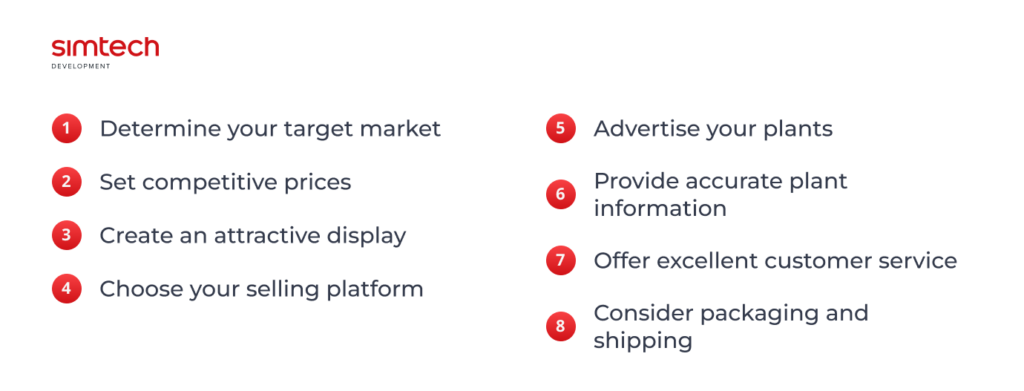
Selling your plants can be an exciting and rewarding experience. Here are some general steps to help you get started:
- Determine your target market: Identify who your potential customers could be. Are you targeting local individuals, plant enthusiasts, or businesses? Understanding your target market will help you tailor your selling approach.
- Set competitive prices: Research the market to determine the average prices for similar plants. Consider factors such as plant size, rarity, and overall health when setting your prices. It’s important to offer competitive rates while still ensuring a fair profit for yourself.
- Create an attractive display: If you plan to sell your plants in person, create an appealing display to catch the attention of potential buyers. Arrange your plants neatly, use attractive planters or pots, and provide clear pricing.
- Choose your selling platform: Decide where you want to sell your plants. Options include local farmers markets, plant fairs, online marketplaces, social media platforms, or setting up your own website. Each platform has its advantages and target audience, so choose the ones that align with your goals.
- Advertise your plants: Utilize various marketing strategies to promote your plants
- Provide accurate plant information: Include details such as plant species, care requirements, growth habits, and any specific benefits or features that make your plants stand out.
- Offer excellent customer service: Positive customer experiences can lead to repeat business and referrals.
- Consider packaging and delivery:Research the best shipping methods for live plants and consider offering tracking options to provide peace of mind to your buyers.
With dedication, knowledge, and a customer-oriented approach, you can successfully sell your plants and turn your passion into a thriving business.
How do I find the plants to begin?
To find plants to begin with, you can follow these steps:
- Determine your plant preferences: Consider factors like sunlight requirements, indoor or outdoor plants, size, care needs, and your personal preferences (flowers, foliage, etc.). This will help you narrow down your choices.
- Research plant options: Use resources like gardening books, websites, or plant identification apps to explore different plants that match your preferences. Look for plants that are suitable for your climate and growing conditions.
- Visit local nurseries or garden centers: Local nurseries often have a wide selection of plants, and the staff can provide guidance based on your requirements. They can help you choose plants that are suitable for your region and offer advice on care.
- Attend plant sales or garden shows: Check for local plant sales, garden shows, or botanical gardens in your area. These events often provide an opportunity to buy a variety of plants and get expert advice from experienced gardeners.
- Seek recommendations: Ask friends, family, or neighbors who are experienced gardeners for recommendations on plants that are easy to grow and maintain. They may have suggestions based on their own successful experiences.
- Consider online options: Many online plant retailers offer a wide range of plants that can be shipped directly to your doorstep. Read reviews, check ratings, and ensure that the seller is reputable before making a purchase.
- Join gardening communities: Engage with gardening communities on social media platforms or forums. You can seek advice, ask for recommendations, and learn from experienced gardeners who can guide you in finding suitable plants.
It is also advisable to consider factors like your available space, time commitment, and skill level when choosing plants. It’s often helpful to start with a few easy-to-grow plants and gradually expand your collection as you gain more experience.
Dropshipping
It is a popular business model where you sell products online without actually keeping them in stock. Instead, you partner with a supplier who handles the inventory, packaging, and shipping of the products directly to your customers. If you want to sell plants online using houseplant dropshipping, look for reputable wholesale plant suppliers who offer dropshipping services. Ensure they have a wide variety of plants, good quality products, and reliable shipping methods. Selling live plants online requires extra care in packaging and shipping. Choose a dropshipping supplier experienced in handling plants, and invest in proper packaging materials to protect the plants during transit.
Dropshipping companies can be a great option for entrepreneurs looking to start an online plant business without the need to handle inventory or logistics. Here are a few drop shippers that specialize in selling houseplants online in the U.S.:
- PlantX offers a wide range of plants, plant-based products, and accessories for dropshipping. They provide a user-friendly platform for setting up an online store and offer reliable shipping services. You can find more information on their website: https://www.plantx.com/
- Dropship Town offers a variety of plants, including live plants, artificial plants, and succulents, for dropshipping. They have a simple integration process and provide competitive pricing. You can explore their program here: https://www.dropshiptown.com/
- Planters’ Choice specializes in dropshipping plant kits and DIY gardening products. You can learn more about their program here: https://planterschoice.com/pages/drop-shipping
Note that it’s essential to do thorough research and due diligence before partnering with any drop shipper. Verify their reputation, terms and conditions, and customer reviews to ensure a reliable and quality partnership.
Growing own houseplants for sale
If you grow your own plants, you can monetize your hobby to make some extra money. Here are some steps for solo-entrepreneurs:
- Prepare your plants: Ensure that your plants are healthy, well-groomed, and free from pests or diseases. Consider repotting them in attractive containers to enhance their appeal.
- Take high-quality photos: Capture clear, well-lit images of each plant from different angles. Showcase their unique features and any blooms or foliage patterns. Good photos can significantly increase your chances of making a sale.
- Set competitive prices: Research similar plants being sold online to get an idea of their market value. Price your plants competitively, considering factors such as size, rarity, and overall condition.
- Choose an online platform: Decide which online platform(s) you want to use to sell your plants. Popular options include websites like Etsy, eBay, or dedicated plant-selling platforms like PlantSwap or Leafythings. Or you can start your own online venture and customize it for your requirements.
- Create enticing listings: Write detailed and accurate descriptions for each plant, highlighting its key features, care requirements, and any special attributes. Include relevant keywords to improve search visibility.
- Provide excellent customer service: Respond promptly to inquiries, provide accurate descriptions, and be transparent about any potential issues with the plants. Good customer service can help build trust and encourage repeat business.
- Package plants securely: Ensure that your plants are packaged securely to prevent damage during shipping. Use appropriate materials like bubble wrap, tissue paper, or plant sleeves to protect delicate foliage and roots.
- Offer shipping options: Decide whether you want to offer local pickup or ship your plants to customers. Research shipping options and costs to determine the most convenient and cost-effective method for your business.
- Market your plants: Utilize social media platforms like Instagram or Facebook to showcase your plants and attract potential buyers. Engage with plant-related communities and use relevant hashtags to increase your reach.
- Maintain plant care instructions: Include care instructions with each plant to help customers keep them healthy. Provide guidance on watering, light conditions, and any specific care needs.
Be careful and comply with any local regulations or permits required for selling plants online, especially if you plan to ship across state or country borders.
How to price plants for sale
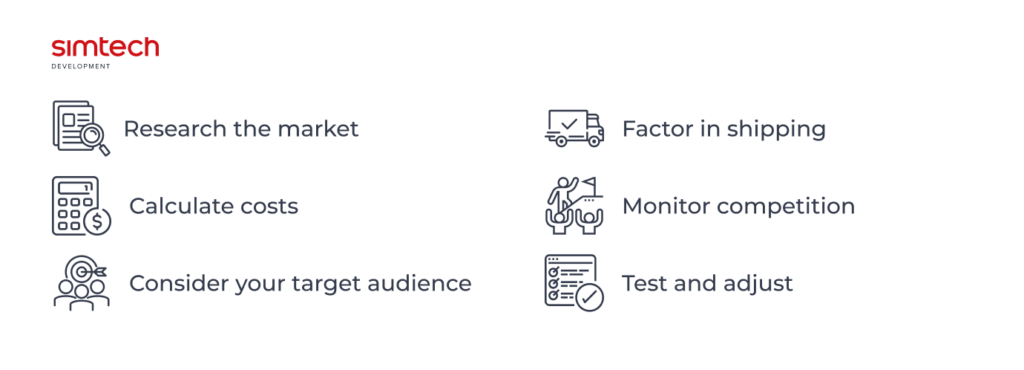
Assigning an adequate price tag is an art. Here are some general tips to help you determine the right pricing strategy:
- Research the market: Look at similar plants being sold online to get an idea of the price range. Consider factors like plant size, health, rarity, and overall quality.
- Calculate costs: Determine the total cost of producing the plants and include expenses such as seeds, soil, pots, fertilizers, and labor. Add any overhead costs like website maintenance, packaging materials, and shipping.
- Consider your target audience: Identify your ideal customers and their willingness to pay. Consider factors like the uniqueness of your plants, their aesthetic appeal, or any other special attributes that might attract buyers.
- Factor in shipping: If you plan to ship the plants, consider the additional costs involved. Determine whether you’ll offer free shipping or charge customers separately.
- Monitor competition: Keep an eye on what your competitors are offering and at what price. Differentiate your plants based on quality, variety, or any other unique selling points to justify your pricing.
- Test and adjust: Start with a reasonable price and monitor the response. If you’re not making enough sales, consider adjusting the price accordingly. Experiment with different pricing strategies to find the sweet spot.
Additionally, you may find it helpful to explore online marketplaces or forums where plant sellers discuss their experiences and pricing approaches.
Here are a few well-known online marketplaces for selling and purchasing plants:
- Etsy (https://www.etsy.com/): Etsy is a popular online marketplace that offers a wide range of products, including plants. Many independent sellers on Etsy offer a diverse selection of plants, from succulents to rare houseplants.
- The Sill (https://www.thesill.com/): The Sill is an online marketplace specializing in houseplants. They offer a curated collection of indoor plants, along with helpful resources and guidance for plant care.
- Bloomscape (https://bloomscape.com/): Bloomscape is an online shop that delivers potted plants directly to your doorstep. They offer a variety of indoor plants with easy-to-care-for options and larger statement plants.
- Plantz (https://www.plantz.com/): Plantz is an online marketplace that focuses on delivering live plants for homes and offices. They offer a range of plants, including tropicals, succulents, and bonsai trees.
- Amazon (https://www.amazon.com/): Amazon is a well-known online marketplace that offers a vast selection of products, like plants. They have a dedicated section for live plants, where you can find a wide variety of options.
Photography for online plant businesses
Photography plays a crucial role in online plant businesses, as it helps to showcase the beauty and details of the plants, making them more appealing to potential customers. Here are some tips for photography in online projects:
- Lighting: Good lighting is essential for capturing the true colors and details of the plants. Natural light is often the best option, so try to photograph plants near a window or in a well-lit area.
- Background: Choose a clean and simple background that doesn’t distract from the plant. A plain white or neutral-colored background works well to highlight the plant’s features.
- Composition: Pay attention to the composition of your photos. Use the rule of thirds to create a balanced and visually pleasing image. Experiment with different angles and perspectives to showcase the plant from its best side.
- Focus: Ensure that the plant is in sharp focus, especially on the key details like flowers or leaves. Use a tripod or stabilize your camera to avoid blurry images.
- Props and styling: Consider adding props or styling elements that complement the plant, such as decorative pots, gardening tools, or other plants. This can help create a visually appealing and cohesive look.
- Variety: Show different angles, close-ups, and different stages of growth to give customers a comprehensive view of the plant. This helps them make an informed decision and understand what they will receive.
- Editing: Use photo editing software to enhance the colors and adjust the brightness and contrast if needed. However, be cautious not to over-edit and maintain the natural look of the plant.
- Consistency: Maintain a consistent style and aesthetic across all your plant photos. This helps to create a cohesive and professional look for your online store.
High-quality and visually appealing photos can significantly impact the success of your online plant business. Invest time and effort into capturing beautiful images that showcase the plants’ unique features and attract potential customers.
Shipping and packing plants
When shipping and packing plants in the U.S., for example, there are several important factors to consider, ensuring their safe transportation. Here are some key points:
- Plant health regulations: Check the regulations of the U.S. Department of Agriculture (USDA) and the state agricultural department regarding plant shipping and quarantine requirements. Ensure compliance with any necessary permits, certifications, or inspections.
- Packaging materials: Use appropriate packaging materials to protect the plants during transit. Consider using sturdy boxes, cushioning materials like bubble wrap or packing peanuts, and secure the plants in place to prevent movement.
- Plant preparation: Trim any excess foliage, remove dead or damaged leaves, and secure the soil to prevent it from spilling. For fragile plants, consider adding support stakes or wrapping them with soft materials for added protection.
- Temperature control: Plants are sensitive to extreme temperatures. Consider the weather conditions during shipping and choose appropriate shipping methods to maintain optimal temperature. Insulate the package if necessary, especially during colder months.
- Moisture control: Ensure plants are adequately watered before shipping, but avoid overwatering, as it can lead to excess moisture and potential damage. Consider adding moisture-absorbing materials or using plastic bags to prevent water leakage during transit.
- Labeling: Clearly label the package as “Live Plants” to ensure proper handling. Include the plant’s name, care instructions, and any special requirements on the package to guide the recipient.
- Shipping carrier selection: Choose a reliable shipping carrier that offers plant transportation services. Consider their experience in handling live plants, their transit times, and their ability to provide tracking and insurance options.
- Timing: Plan the shipping date carefully, considering the weather conditions, transit duration, and the recipient’s availability to receive the plants. Avoid shipping plants during extreme weather conditions or holidays when delays are more likely.
- Communication with the recipient: Inform the recipient about the expected delivery date and provide any necessary care instructions to ensure the plants are properly cared for upon arrival.
- Insurance: Consider purchasing shipping insurance to protect against potential damage or loss during transit. Check with the shipping carrier about their insurance options and coverage limits.
There may be additional regulations or restrictions specific to the types of plants being shipped, as different species may have specific requirements.
Legal issues
Is it legal to sell plants from home? It is crucial for sellers to research and understand the specific legal requirements and regulations in their jurisdiction to ensure compliance when selling plants online. Consulting with legal professionals or industry associations can provide further guidance and assistance in navigating these legal issues.
Some of the key issues include:
- License and permits: Depending on the jurisdiction, you may need to obtain specific licenses or permits to sell plants online. These requirements can vary based on factors such as the type of plants being sold, the quantity, and the location of the seller and buyer.
- Plant quarantine regulations: Many countries and states have regulations in place to prevent the spread of pests, diseases, and invasive species through the movement of plants. Sellers must comply with these regulations and ensure that they are not violating any quarantine laws when shipping plants across borders.
- Labeling and disclosure requirements: Sellers may be required to provide accurate and detailed information about the plants they are selling, including their scientific names, potential allergens, and any special care instructions. Failure to provide accuracy could result in legal liability if the buyer suffers harm or financial loss.
- Intellectual property rights: Sellers must be cautious about infringing on intellectual property rights, such as trademarks or patents, when selling plants online. For example, using a trademarked plant name without permission could lead to legal consequences.
- Consumer protection laws: Sellers must comply with consumer protection laws, which vary by jurisdiction. These laws typically govern issues such as product quality, warranties, refunds, and deceptive advertising. Sellers must ensure that they are providing accurate product descriptions, fulfilling orders in a timely manner, and addressing customer complaints appropriately.
- Privacy and data protection: When selling plants online, sellers may collect and store personal information from customers, such as names, addresses, and payment details. It is important to comply with applicable data protection laws and take appropriate measures to secure customer data and protect privacy.
Let’s consider the example of the US plant market. To get more specific and up-to-date information about the legal requirements and regulations for selling plants online in the U.S., you may find it helpful to visit the following resources:
- United States Department of Agriculture (USDA) – Animal and Plant Health Inspection Service (APHIS): The APHIS website provides information on plant import and export regulations, permits, and quarantine requirements. Visit their website at: https://www.aphis.usda.gov/
- National Plant Board: The National Plant Board is an organization that represents the plant regulatory agencies of all 50 states. They provide information on state-specific regulations and plant quarantine requirements. Visit their website at: http://nationalplantboard.org/
Remember, it’s always best to consult with a legal professional or relevant authorities to ensure compliance with all applicable laws and regulations when selling plants online in the U.S.
Best way to sell plants online. A To-Do List
- Choose your business model. By business model, we mean an online store or a marketplace. If you are a gardener yourself who has a backyard nursery or just want to monetize the hobby, then a one-seller online store is your option. You can try the CS-Cart online store solution to speed up the process of going online. In case your aim is to be an intermediate who helps others to sell plants for a commission, then Multi-Vendor is the best fit. Regardless of your model, any of these solutions has beautiful design, all eCommerce site features embedded like delivery and payment methods and a hook-based architecture allowing for its flexible customization if required.
- Create an E-commerce Website: Set up a user-friendly website where you can showcase your plants and provide detailed descriptions. Include high-quality images and extra details about each plant, such as care instructions, size, and price.
- Optimize your Website for Search Engines: Use relevant keywords and phrases in your website content to improve its visibility on search engines like Google. This will help potential customers find your website when searching for specific plants.

Bloomscape included all plant name variations to ease searching of the product
- Offer a Variety of Plants: Provide a wide range of plants to cater to different customer preferences. Include popular choices like succulents, houseplants, flowers, and herbs. Consider offering rare or hard-to-find plants to attract plant enthusiasts.
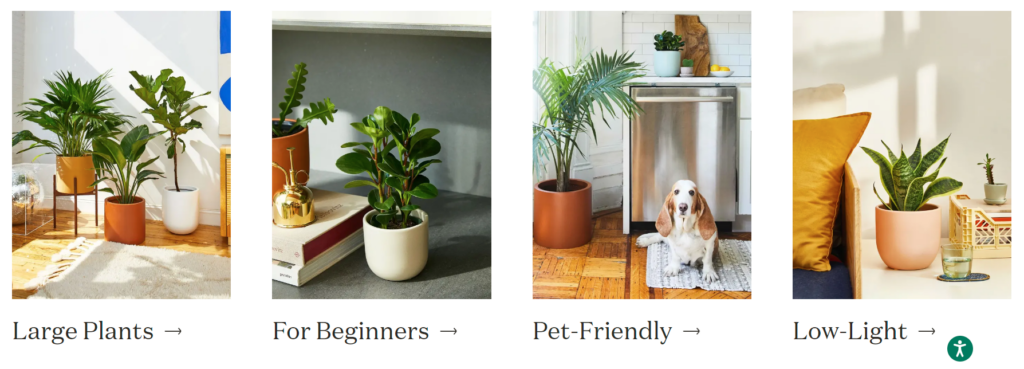
The sill.com offers a variety of plants for any choice and conditions
- Provide Detailed Plant Information: Include comprehensive details about each plant, such as growth habits, light requirements, water needs, and care tips. This will help customers make informed decisions and increase their trust in your expertise.

Plant description on Bloomscape
- High-Quality Product Images: Take professional-quality photos of your plants to showcase their beauty and attract potential buyers. Ensure that the images accurately represent the plants you are selling.
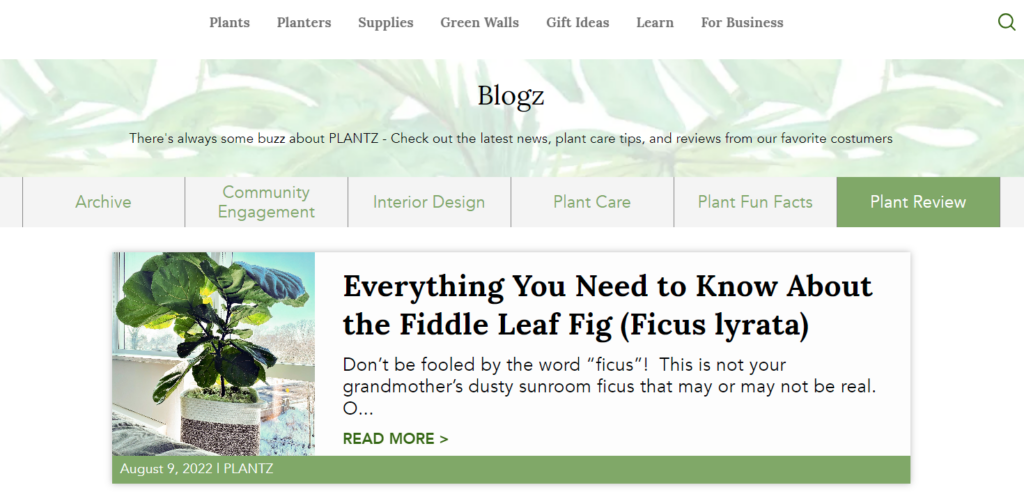
Images on plantz.com have a clear background and a high quality
- Secure Packaging and Delivery: Invest in secure packaging materials to protect the plants during transit. Use appropriate methods to ensure the plants arrive in good condition. Provide tracking information to customers, so they can monitor their package’s progress.

You can include your guarantee in a separate section on your website and follow these high standards to earn the customer loyalty
- Offer Customer Support: Provide excellent customer service by promptly responding to inquiries and addressing any concerns. Offer guidance and support to customers who may need assistance with plant care or selection.
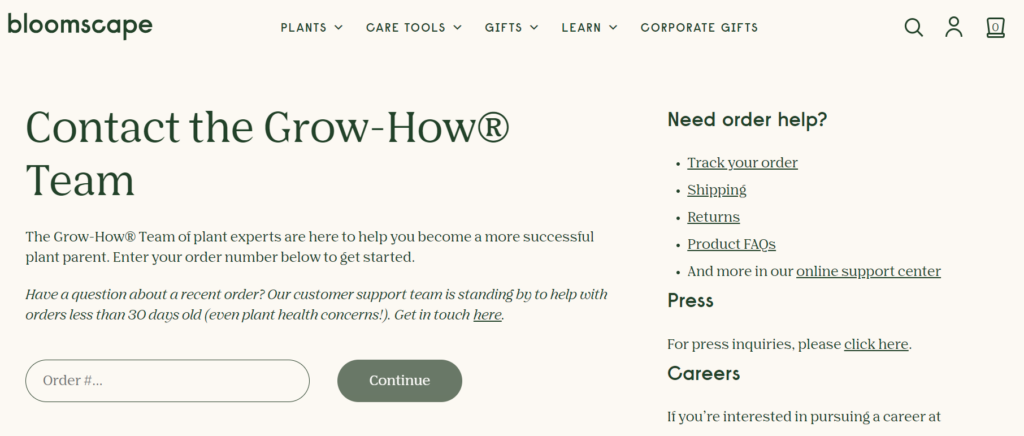
Bloomscape.com offers their help with Grow-How Team
- Social Media Marketing: Use social media platforms like Instagram, Facebook, and Pinterest to showcase your plants and engage with potential customers. Post high-quality photos, share care tips, and interact with followers to build a loyal customer base.

Marketing on Bloomscape with the help of UGC
- Collaborate with Influencers: Partner with plant influencers or bloggers who have a significant following in the plant community. They can promote your plants to their audience, increasing your visibility and credibility.
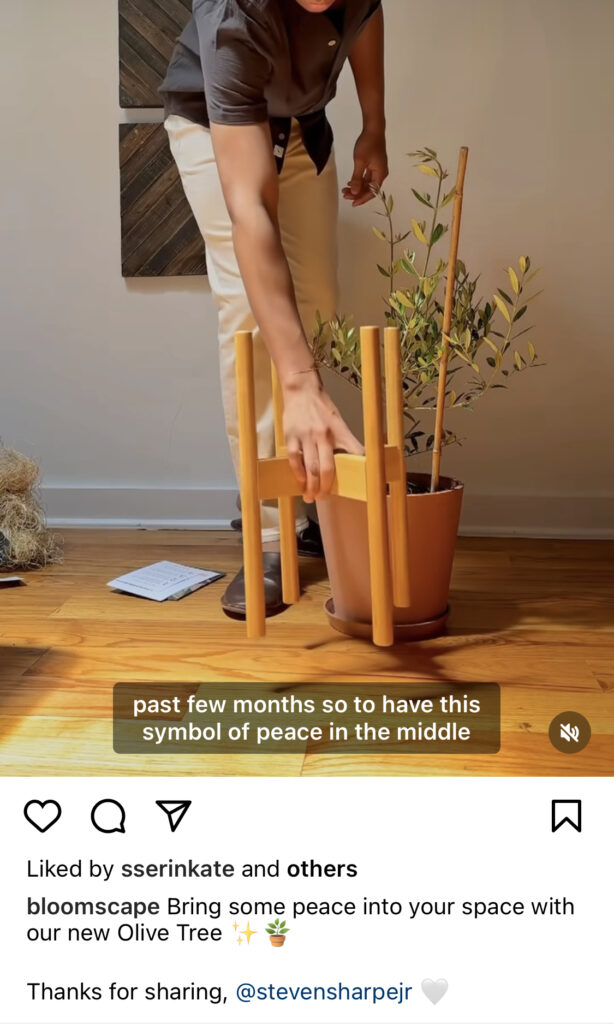
- Provide Plant Care Guides or Blogs: Create informative content on your website, such as plant care guides or a blog. This will establish you as an authority in the plant industry and attract potential customers seeking plant-related information.
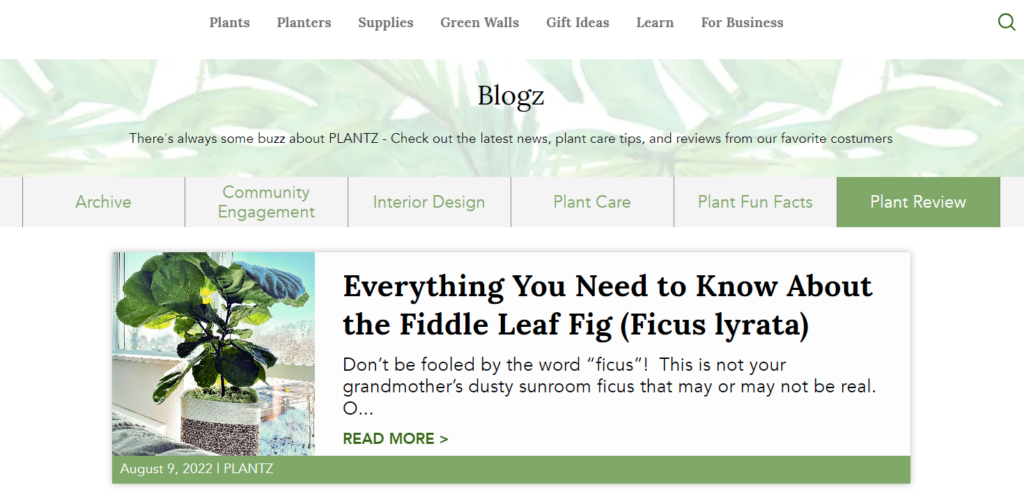
Plantz run their Blogz for planters
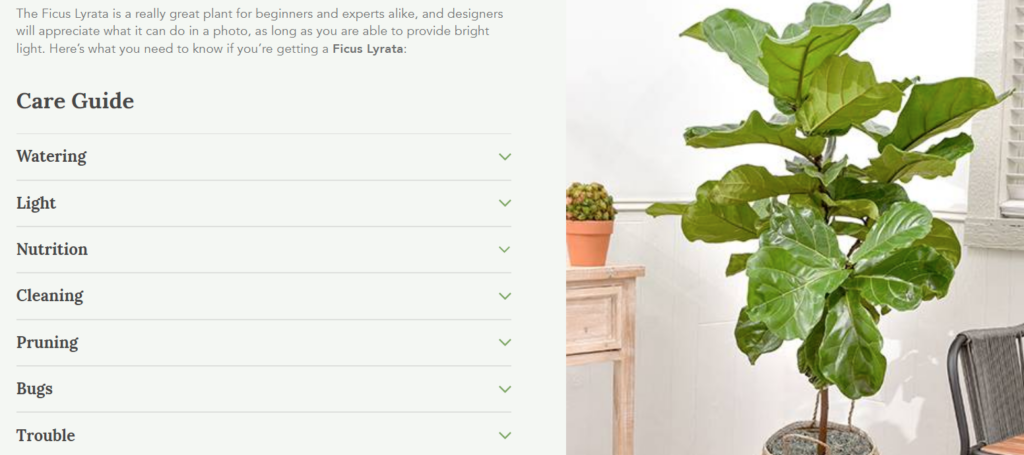
A Care Guide on plantz.com
One should understand that it is crucial to continuously assess and improve your online selling strategy based on customer feedback and market trends.
Learn from Mistakes
When selling plants online, there are a few common mistakes that can occur:
- Poor product descriptions: Insufficient or inaccurate descriptions can lead to confusion and dissatisfaction among customers. It is essential to provide details about the plant’s characteristics, care requirements, size, and any other relevant details.
- Inadequate product images: Low-quality or misleading images can misrepresent the plant’s appearance or condition. It is crucial to provide high-resolution images that accurately depict the plant from different angles and highlight its key features.
- Incorrect pricing: Pricing mistakes, such as overpricing or underpricing, can lead to customer dissatisfaction or financial losses. It is important to research the market value of the plants and set reasonable prices accordingly.
- Lack of plant care instructions: Failing to provide clear care instructions can result in plants not surviving or thriving in the customer’s care. Adding detailed care guidelines for each plant can help customers understand how to properly care for their purchase.
- Inadequate packaging and shipping: Improper packaging and shipping can lead to damaged or wilted plants upon arrival. It is crucial to use appropriate packaging materials and shipping methods to ensure the plants are protected during transit.
Learning from mistakes is an ongoing process. Don’t stop on improving your platform, and keep on providing the best shopping experience by correcting mistakes.
How to customize your online plant store for better results
- Add a Calendar with delivery slots to the checkout page. Vendors will be able to establish time slots for customers to pick up their orders, and a quantity of how many orders they can successfully fulfill in that time slot.

- Import product base from a third-party service. Use product images and descriptions from a wholesaler/nursery CMS you partner with to reduce time and mistakes on content filling. Form SKUs. For example, SUC-ALO-SM can stand for a succulent plant of the aloe type and small size. You can integrate a specific plant CMS to add more features to the default CS-Cart functionality.
- Think about the subscription model to take a recurrent payment monthly. Our developers can do it for you.
Any idea you have about your online plant store or marketplace?
Selling on popular marketplaces
Apart from your dedicated site, you can choose to sell on Amazon, Etsy or AliExpress. But be aware of fees you will have to pay for listing your items. If you already have a store on one of these marketplaces, but are aspiring out to launch your own plant selling site, it is possible to connect your product base to your CS-Cart site and increase your online presence. Write to us to get details on Amazon or AliExpress connection opportunities.
Conclusion
Building an eCommerce plant selling website can be challenging, especially if you are not familiar with web development and e-commerce platforms. Here are the challenges to consider:
- Technical skills: Developing a website requires knowledge of web development languages (HTML, CSS, JavaScript) and frameworks. You may need to hire a professional developer or learn these skills yourself.
- E-commerce functionality: An eCommerce website requires features like product listings, shopping cart, payment gateways, and order management. Implementing these functionalities can be complex, especially if you want to offer advanced features like inventory management and customer reviews.
- Design and user experience: Creating an attractive and user-friendly website is crucial for attracting customers. You need to consider layout, color schemes, navigation, and responsiveness for different devices.
- Product management: Managing plant inventory, including updating stock levels, adding new products, and handling variations, can be time-consuming. You may need a content management system (CMS) that simplifies these tasks.
- Marketing and SEO: Once your website is built, you need to focus on marketing and search engine optimization (SEO) and even video SEO (VSEO) to drive traffic and increase visibility. This involves strategies like content creation, social media marketing, and optimizing your website for search engines.
- Security and payment integration: Ensuring the security of customer data and integrating secure payment gateways is crucial for an e-commerce website. You need to implement SSL certificates, encryption, and follow best practices to protect customer data.
While building an online plant selling website can be challenging, there are also various website builders and eCommerce platforms available that simplify the process. These platforms provide pre-built templates, e-commerce functionality, and integrations, making it easier for non-technical users to set up an online store. And if you need a turn-key approach to start your online venture without hassle, feel free to contact our consultants. They will provide you with all the necessary information for a quick start of your eCommerce website.
FAQs
How to sell plant online?
Online plant selling typically involves setting up an e-commerce website or utilizing existing online marketplaces. Sellers list their plants with descriptions, prices, and images. Customers can then browse the available plants, select the ones they want to purchase, and complete the transaction online.
What are the benefits of selling plants online?
– Increased reach: Sellers can reach a wider customer base beyond their local area.
– Convenience: Customers can explore a wide range of plants and make purchases from the comfort of their homes.
– Availability: Online platforms often offer a greater variety of plants compared to physical stores.
– Information: Detailed descriptions and images help customers make informed decisions about their plant purchases.
What are the challenges of eCommerce plant websites?
– Shipping concerns: Plants need to be carefully packaged and shipped to ensure they arrive in good condition.
– Plant care instructions: Providing accurate care instructions to customers is important to ensure the plants thrive after delivery.
– Customer trust: Building trust with customers is crucial, as they cannot physically inspect the plants before purchase.
How to sell plants to nurseries?
Selling plants to nurseries can be a great way to monetize your gardening hobby or plant business. Here are some steps to help you get started:
– Research nurseries: Identify local nurseries in your area that may be interested in purchasing plants. Look for nurseries that specialize in the types of plants you have to offer.
– Prepare your plants: Ensure that your plants are healthy, well-maintained, and ready for sale. Take the time to properly care for them, including regular watering, fertilization, and pest control. Nurseries will be more likely to buy plants that are in good condition.
– Create a product list: Make a comprehensive list of the plants you have available for sale. Include details such as the plant’s common and scientific names, size, growth habit, and any unique features. This will help nurseries understand what you have to offer.
– Set competitive prices: Research the market value of similar plants to determine a fair and competitive price for your plants. Consider factors such as plant size, rarity, and overall quality. Be prepared to negotiate with nurseries on pricing.
– Contact nurseries: Reach out to nurseries directly to inquire about their interest in purchasing plants. You can do this by phone, email, or in person. Introduce yourself, provide a brief overview of your plant offerings, and express your interest in selling to them.
– Provide samples or photos: If possible, offer nurseries samples of your plants or provide high-quality photos that showcase the plants’ appearance. This will give nurseries a better idea of what they can expect to receive.
– Negotiate terms: Once a nursery expresses interest, discuss the terms of the sale. This may include the quantity of plants, delivery or pickup arrangements, payment terms, and any other relevant details. Be prepared to negotiate and find a mutually beneficial agreement.
– Fulfill orders: Once you’ve reached an agreement with a nursery, fulfill their order promptly and professionally. Ensure that the plants are properly packaged and transported to maintain their quality during transit.
– Build and maintain relationships: Nurseries often prefer to work with reliable suppliers. Therefore, it’s important to build and maintain good relationships with the nurseries you sell to. Provide excellent customer service, respond promptly to inquiries, and deliver high-quality plants consistently.
Remember, selling plants to nurseries may require patience and persistence, as it can take time to establish relationships and find buyers. However, with proper preparation and a focus on quality, you can successfully sell your plants to nurseries and turn your passion into a profitable venture.
How to source plants?
You can grow plants by yourself or revert to a local plant nursery or a wholesaler. Each option has its pros and cons. Decide depending on your background and capabilities. Growing plants on your own can reduce the cost of a product, but you need to include the cost of equipment in the final price. Wholesaler is easier to operate with, but they may not have all the product range at a time. A local nursery provides the greatest choices for plant distributors and can offer a competitive price. Some nurseries are tailored to meet the online resellers’ demand. Consider Tennessee Wholesale Nursery. It allows using their product images and descriptions. Or, opt for Gro ‘n Sell. It has a large inventory of high-quality starter plants. Place your order in advance to receive a discount.
